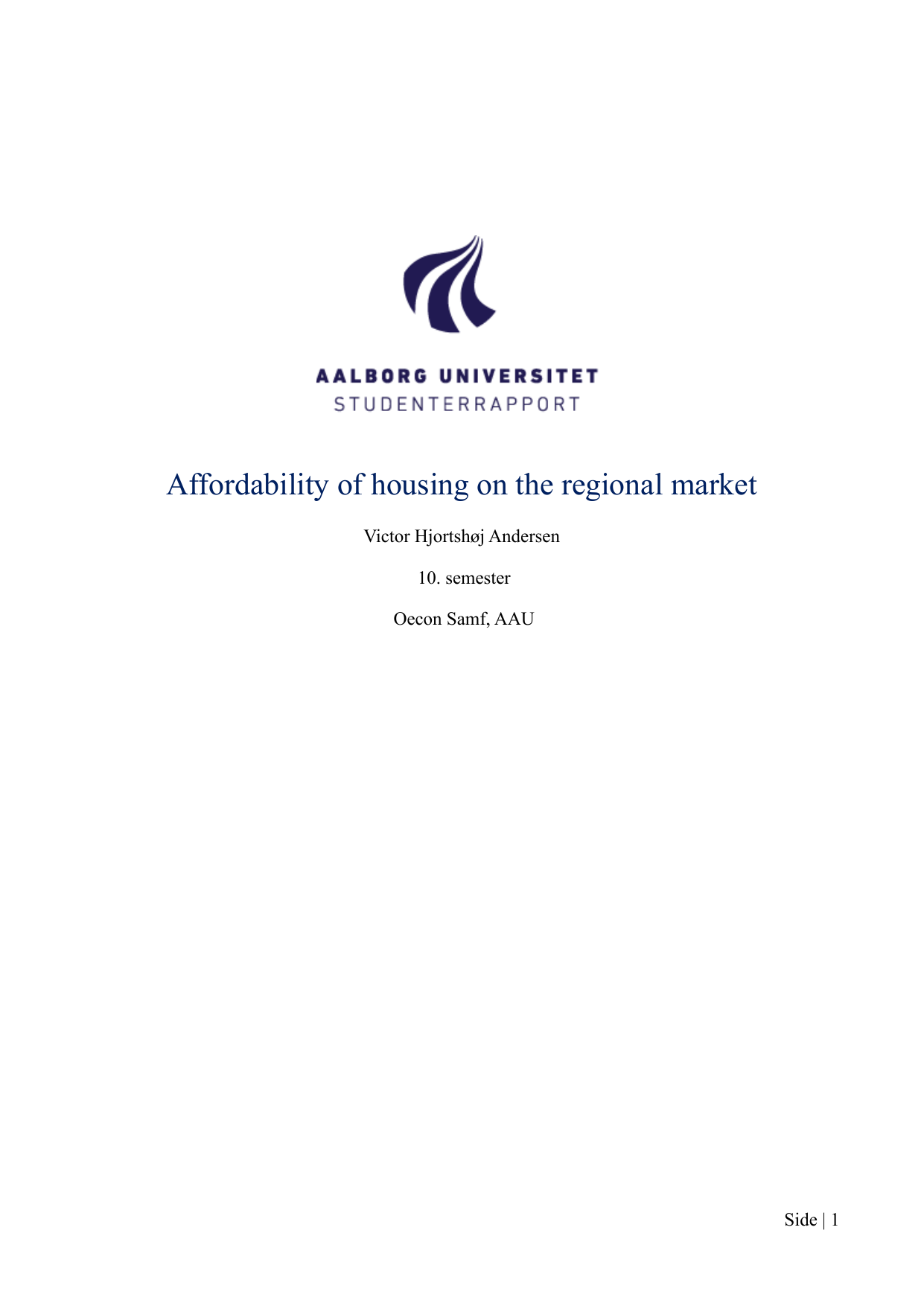
Affordability of housing on the regional market
Author
Term
4. term
Education
Publication year
2025
Submitted on
2025-11-03
Pages
61
Abstract
This paper examines how housing affordability has changed across the Danish regions over time and what these developments may indicate for future homeowners. To answer this, regional housing data was combined with national macroeconomic variables and analyzed through the use of local projections to estimate impulse response functions. The model made it possible to study how shocks to key variables such as effective mortgage rates, wages, core inflation, and housing sales affect housing prices for both apartments and one-family homes across each region. The analysis found that effective mortgage rates had the strongest and most consistent relationship with housing prices. A two-phase pattern was observed, where an initial short-term positive response was followed by a longer negative adjustment, reflecting behavioral reactions such as loss aversion and later correction to higher borrowing costs. Inflation shocks showed similar delayed negative effects on prices, mainly through the transmission of higher interest rates, while wage shocks were limited in their impact as wage growth in many regions had already outpaced price increases. Sales shocks indicated stronger demand-driven effects for one-family homes, while apartments responded more slowly, likely due to larger supply and market stability. When comparing regions, the findings showed clear differences in both timing and magnitude of the price responses. The Capital Region proved to be the most sensitive to both rate and inflation shocks, reflecting higher price levels, stronger demand, and tighter supply. Regions such as North Jutland and Lolland showed much weaker reactions, highlighting how local market structure and geography shape price behavior. Overall, the results show that affordability in Denmark has not developed equally across regions. Wages have improved affordability in smaller counties, while larger cities and the Capital Region remain challenging for new buyers due to higher price levels and stronger demand. The findings therefore indicate that future affordability will continue to depend heavily on location, with smaller regions maintaining more stable and accessible housing markets, while the Capital Region faces continued affordability pressure.
Documents
